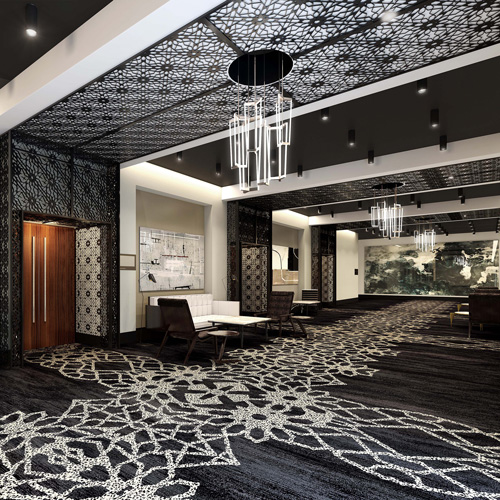In 1998, brothers Shep and Ian Murray quit their Manhattan desk jobs on the same day to start a lifestyle apparel brand. With everything on the line, the adventurous siblings maxed out their credit cards to fund the production of 800 neckties.
The gamble paid off—they sold out in just a few days. The brothers moved into their first office weeks later, and their company, vineyard vines, has been growing ever since. As of press time, the brand counted 53 retail and 14 outlet locations across the country. As the company expands, Kirsten Oswald, vice president of real estate, has created a streamlined, in-house process to facilitate aggressive growth and elevate store design as the company continues its expansion.
Oswald, who started out of college working for a development company and later got into specialty leasing, has deep experience with companies such as Gap and Coldwater Creek. That experience, combined with her professional relationships, is proving invaluable as vineyard vines adds new brick-and-mortar locations to complement its catalog and Internet offerings.
Before moving forward with a new location, Oswald examines many factors closely, poring over data about average household income, area density, and tenant mix issues. She also scrutinizes internal vineyard vines customer data to determine where Internet customers live and where the company has an existing wholesale business. Her streamlined, standardized process starts at site selection, as she and her team complete an on-site gut check with all major players to test fit, layout, and other essential details.
Next, she moves to sign a letter of intent and negotiate deals before scheduling a real estate committee meeting. Once the company approves the deal, Oswald is off to the races, working closely with the architect on a design as she finalizes the lease. The entire process typically spans about 32 weeks from lease negotiation to store opening. Even with this streamlining, some challenges will present themselves.
“Major developers often want package deals, and sometimes it makes sense for us to be in one of their locations and not the others,” she says. “It’s a challenge, and we’ve had to walk away from deals for this reason.”


Oswald knows that for vineyard vines to succeed, her team has to execute to build each new store in the right location. She also has to work with design teams to create the right atmosphere for the brand.
“We want our customers to feel at home in a warm and inviting space where they can relax, have fun, and shop,” she says. The company accomplishes that through high-end millwork, teak and holly fixtures, unique props, wood floors, sea grass chairs, as well as TVs and water coolers in each location. These design cues were taken from the vineyard vines’ fun-loving and laid-back owners.
Oswald, who came to vineyard vines in 2014, is also strengthening her team. She’s hired a director of construction and other leaders who have implemented her changes.
“It’s an ongoing process that requires a huge amount of communication, but we’re getting stronger every day and we’re becoming a well-oiled machine,” she says.
In late 2015, vineyard vines opened a new store in Walnut Creek, California, ahead of an early 2016 opening in Naples, Florida. Oswald expects the company to continue opening new locations over the next few years. She’s passionate about retail real estate and lease negotiations.
“I’ve always approached retail development as if I were an investor in the deals, and that drives my strategy,” she says. “It’s rewarding to negotiate smart, lucrative deals.”
Nearly two decades after Shep and Ian left their desk jobs, the Murray brothers still own their business—and vineyard vines is still on its way up.


